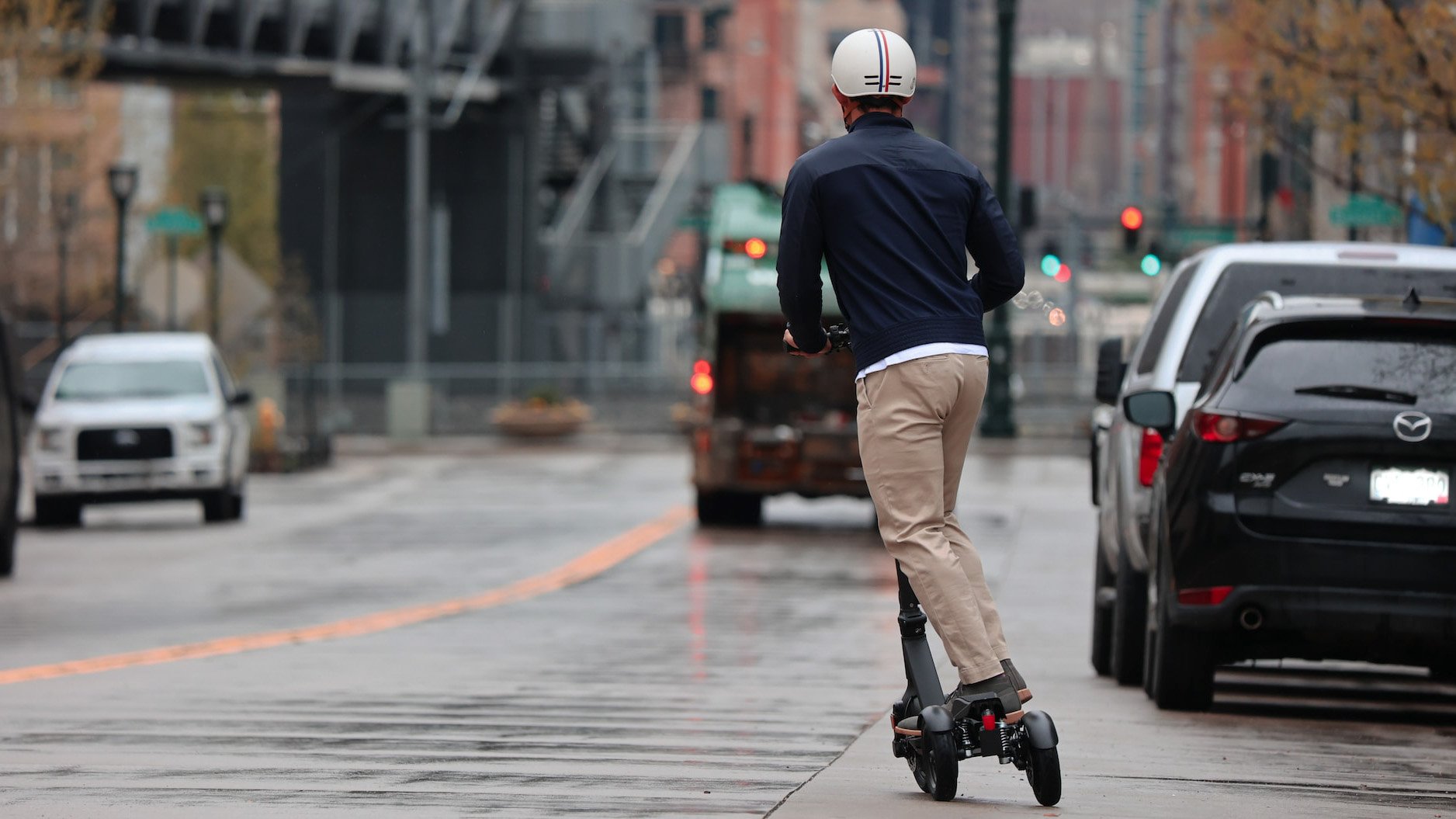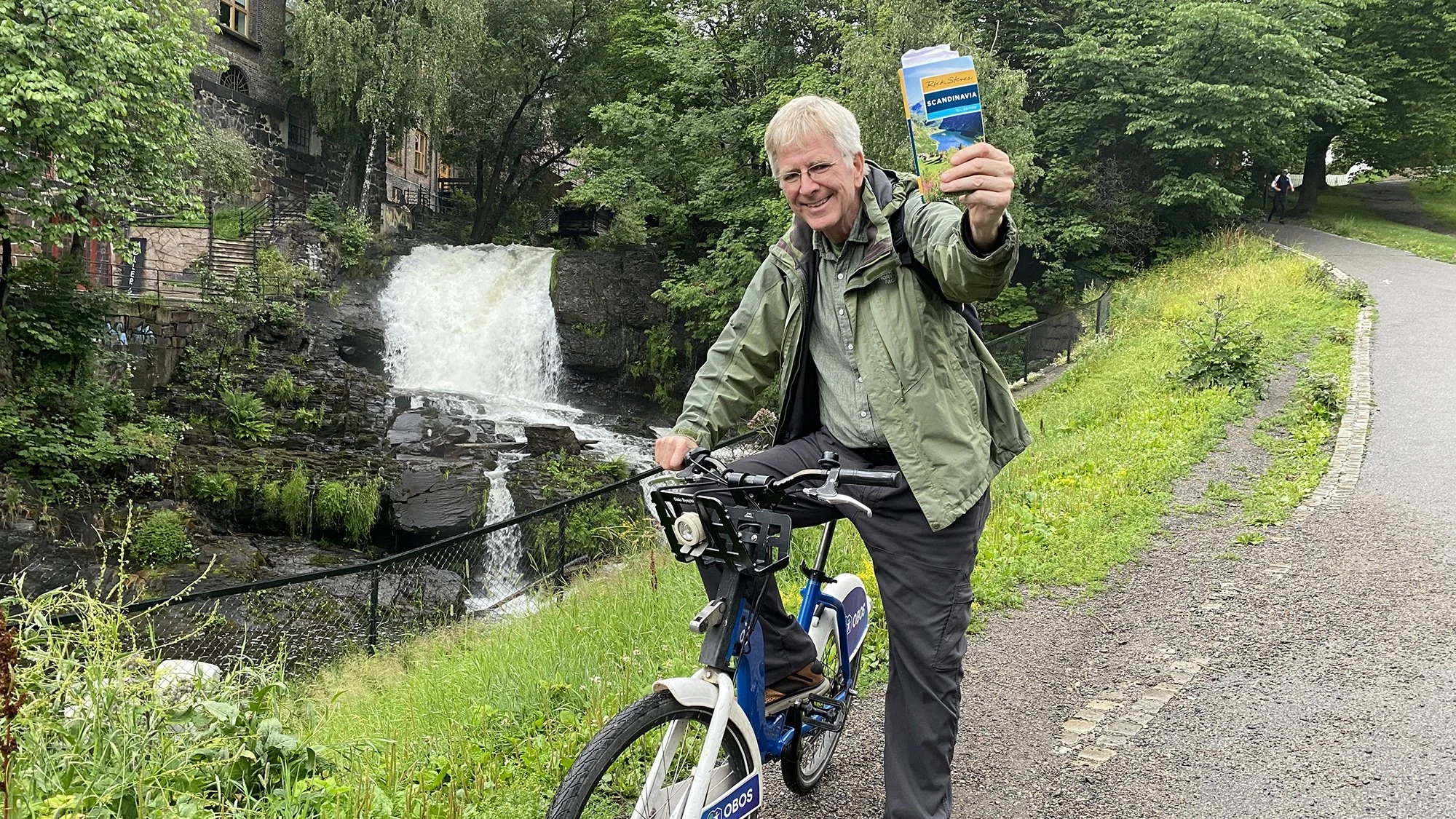A Word About “Protected” Bike Lanes: They’re Not
(Source: Unsplash/Munbaik Cycling Clothing.)
If you’ve spent any time on a bicycle in North America, you’ve seen a MAMIL. This Middle-Aged Man in Lycra has expensive equipment and very strong opinions about cycling, despite representing a very small slice of the cycling public. While planners and transportation engineers should listen to all interested parties in building better bicycling infrastructure, too much focus on MAMILs could hurt the cause of expanding the overall pool of riders.
Timothy Tresohlavy, AICP, a planner with Stantec who specializes in bicycling infrastructure projects, made this case during a presentation at the Congress for the New Urbanism. He says the focus for planners, engineers, and municipal officials must be “making sure that we're accommodating a majority of users.” He didn’t invent the term MAMIL, but says he finds it useful in framing some of the issues around planning, and in how citizens engage with it.
All successful projects start with community input and engagement. For MAMILs, “Once you become an experienced rider, you start narrowing your focus … It's probably riding fast, it's getting exercise, it's flat, smooth roads with no pebbles and rocks and leaves.” This contrasts with setting conditions that accommodate all ages and abilities, such as lower-speed interactions with traffic, and the broader question, “How do we continue to grow biking?”
Too often, in Tresohlavy’s experience, those discussions become too compartmentalized. Citizen advocates may come to the table with a specific solution. City leaders and engineers may be fixated on another. “The best of planning is when you're linking community goals,” says Tresohlavy, and trying to reconcile “return on investment based on the broad benefits to the community.”
The economic benefits of human-friendly infrastructure are well documented, and Tresohlavy takes those calculations another step. A frequent source of complaints about adding bike lanes comes from business owners concerned that losing street parking will harm their businesses. But replacing car parking with cycling accommodations can actually improve business.
“Always remember that one parking space can fit about six bicycles,” says Tresohlavy. Then, because cars turn over parking spaces less frequently, that space opens up only a handful of times each day. So the merchant complaining about losing five customers a day could actually be gaining 40 or 50. City leaders in Washington, DC, have made similar points about their reconfiguration of Connecticut Avenue.
There are two practices that Tresohlavy thinks planners should prioritize when working on bicycling infrastructure. In urban settings, put a bicycle parking corral on the street at the end of a block. This has the added benefit of improving visibility to the intersection: “So now by having bicycle parking, as opposed to car parking, you're actually improving safety and visibility for your vulnerable users at that intersection,” says Tresohlavy.
For projects that may connect with regional trails or greenways, it’s worth the extra effort to provide safe, easy links between them for cyclists and walkers, advises Tresohlavy. “Those are the most expensive projects per linear foot, but they'll have the biggest [economic] impact,” by filling in gaps in the network.
Tresohlavy doesn’t claim that bicycling is a panacea for all transportation problems, but effective practitioners are “always considering how we can get more people to use different modes, even for just a couple of trips here and there.” With so many trips in the 1–3 mile range, “we don't have to throw away our cars” while designing for those other uses, he says. But in considering how infrastructure and design contribute to safety, all elected officials and planning professionals should remember an important point: “You are a pedestrian on every single trip that you make, whether you're getting to and from the parking lot, or your front door, or from your bicycle parking spot, or from the bus stop.” (The shocking toll of pedestrian deaths in the U.S. underscores this point.)
For a glimpse of what a multi-modal user experiences, Tresohlavy says to pay special attention to how you get around in a city you visit without a car. It’s through that combination of walking, biking, or taking public transportation that you can see a city’s friction points. While everyone benefits from a well-rounded transportation network, cities can also point to tourism revenue as an ancillary benefit to that investment.
Every planning professional has some word or catchphrase that grinds their gears. For Tresohlavy, it’s “protected bike lanes.” Though he dedicates his career to executing safe projects, he cautions against using the word “protected,” because “you're not in a tunnel, you're not protected, you're not in bubble wrap.”
He says the proper term, used in federal guidelines that fund many of these projects, is separated bike lane, and that separation can take the form of “a curb, or flex-post bollards, or planters, or even parked cars.” Even when the best bike lanes provide this effective “vertical separation,” these riders all end up at several intersections with a complex mixing of cars and pedestrians. So, he cautions that the mindset that any lane is “protected” will only make cyclists and drivers more complacent.
Tresohlavy is a believer in the “plangineering” mindset, in which planners, designers, and engineers learn to think more holistically about their roles. But he has a soft spot for engineers and urges everyone working with them to “have some compassion” for their plight. He notes that planners and other parties working on a project bear little legal liability for their work, and this is comforting. In contrast, engineers “shoulder all the risk—they're tasked with the general health, safety, and wellness of our citizens.” He says planners and designers must communicate proactively and effectively with engineers throughout a project to set them up for success.





Maddy Novich is a criminal justice professor at Manhattan College, a mom of three, and an Instagram influencer living in New York City—you might know her as @cargobikemomma!